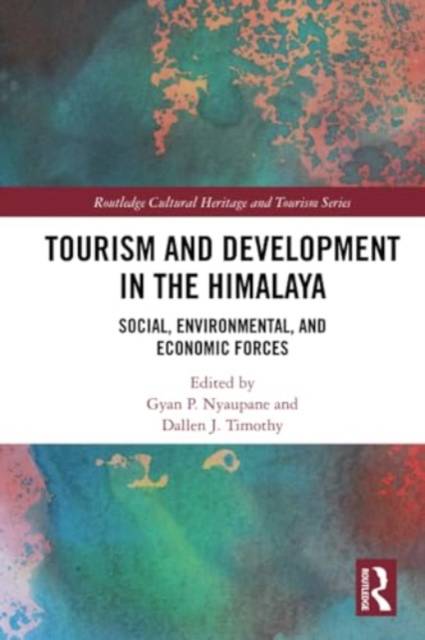
- Afhalen na 1 uur in een winkel met voorraad
- Gratis thuislevering in België vanaf € 30
- Ruim aanbod met 7 miljoen producten
- Afhalen na 1 uur in een winkel met voorraad
- Gratis thuislevering in België vanaf € 30
- Ruim aanbod met 7 miljoen producten
Tourism and Development in the Himalaya
Social, Environmental, and Economic Forces
Omschrijving
This book examines the unique characteristics of the Himalaya that mark them as a special region among other orographic regions of the world. The Himalayan range is an important global asset for ecological, climatic, cultural, spiritual, and economic reasons. Its diversity of landscapes, climates, and biotic systems makes the Himalaya an extremely attractive region for tourism. The book examines tourism and development in the Himalaya region, exploring its sociocultural, environmental, and economic dimensions.
The contributors address Himalayan issues from a holistic perspective, emphasizing the uniqueness of the region, together with concerns it shares with other montane, developing parts of the world. With a framework of sustainable development, this book elucidates interdisciplinary perspectives on nature, society, economic development, poverty, justice, health, social and environmental vulnerability, faith and culture, Indigenous rights, women, conflict, heritage and living culture, and many other concepts that broaden our understanding of tourism and development in mountain areas. Many contributors are from the Himalaya region, or have worked there extensively, lending strength through native and insider perspectives.
This work will be useful for advanced undergraduate and graduate students, research and teaching scholars, policy makers, practitioners, and anyone interested in the Himalaya and their distinctive tourism and development-related potential and challenges.
Specificaties
Betrokkenen
- Uitgeverij:
Inhoud
- Aantal bladzijden:
- 328
- Taal:
- Engels
- Reeks:
Eigenschappen
- Productcode (EAN):
- 9781032272610
- Verschijningsdatum:
- 29/01/2024
- Uitvoering:
- Paperback
- Formaat:
- Trade paperback (VS)
- Afmetingen:
- 156 mm x 234 mm
- Gewicht:
- 480 g

Alleen bij Standaard Boekhandel
Beoordelingen
We publiceren alleen reviews die voldoen aan de voorwaarden voor reviews. Bekijk onze voorwaarden voor reviews.










